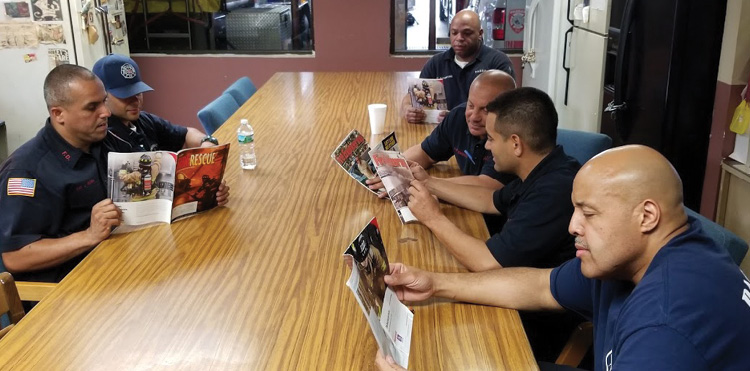
By John Hayowyk Jr.
In recent years, the company drill has become increasingly more important throughout the fire service. With the decrease in the number of fires and the increase in service-related responses, the fire service needs to find the time to educate its members. Better public fire prevention awareness and improved detection/suppression systems have led to the decrease in fires. However, the number of company-based, in-service inspections has increased. The firehouse kitchen table is still where many fire service challenges and concerns are discussed and debated and where learning takes place. One effective way for a fire company to spend valuable training time is to read, review, and analyze fire service magazine articles, photos, and videos (photo 1).

Photos by author.
The officer begins, directing questions at the crew members after each has reviewed the photo or video. The members’ contributions will depend on their personal experience; each most likely will see something different in the item being analyzed, which will add to the discussion. The rookie may even surprise some of the senior members.
The officer should focus the discussion on a particular fire response aspect: scene size-up, life hazards, building construction, apparatus placement, smoke condition, fire extension, ventilation options, rapid intervention concerns, or scene safety concerns.
Scene Size-Up
Scene size-up is among the most important actions responding units must perform; for most, size-up begins once the alarm has been transmitted. Recalling information about the location from preincident plans can help in formulating a plan of attack while en route. Once you are on scene, the initial size-up is essential to prepare other responding units for the operations they may perform on arrival. While operating at the incident, sizing up for worsening conditions must be continuous so operating members’ safety is not threatened by a collapse or an entrapment.
Life Hazards
Look for places where victims may be—for example, a window air-conditioner indicates a living space (photo 2). Victims could be in many places; look in the obvious places such as behind doors, beneath windows, on the fire escape, and so forth. Check the out-of-the-ordinary places such as air and light shafts, rooftops, the structure’s perimeter—i.e., shrubs and alleys—and any of the hiding places inside the structure. Remind the crew that they are also part of the life hazard consideration. All crews responding to the incident have the responsibility to watch out for themselves and everyone around them.
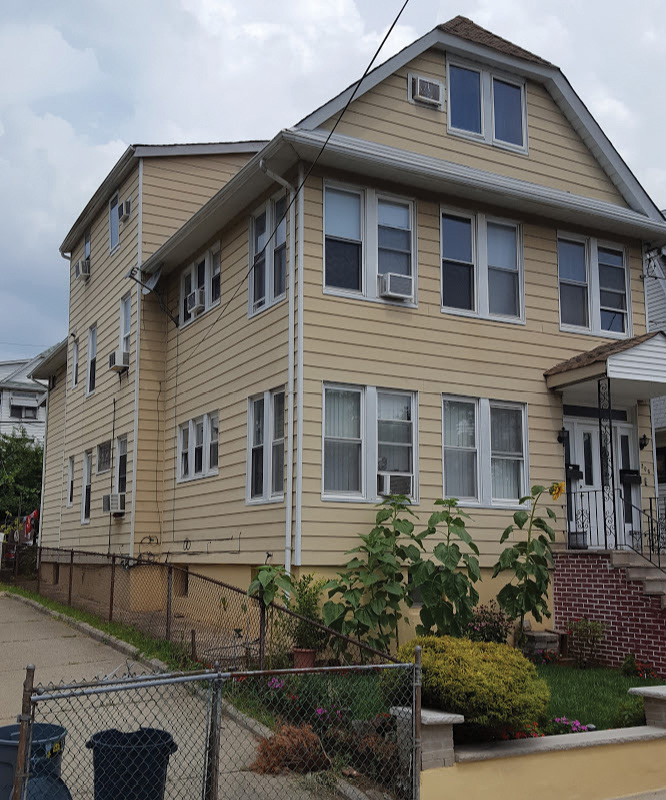
Building Construction
Look at the type of building in the photo or video. What is the classification—fire resistive, noncombustible, ordinary, heavy timber, or wood frame? Are trusses present? Are they being compromised? By determining the building construction, the members will learn how the smoke and fire may spread throughout the structure. Knowing the inherent structural weaknesses of each type of building construction, especially when it is involved in fire, will assist in firefighter safety.
It is not enough to know the structure’s interior components; you must also know what will add to fire growth and extension. An outer layer of vinyl covering “old-school” asphalt siding adds the potential for rapid fire spread vertically and to nearby exposures (photo 3). Conversely, a masonry exterior finish diminishes the potential for the siding to ignite, but the windows and combustible curtains may catch fire because of autoexposure or radiant heat. The eaves and the gutter line are other exterior features to observe. What is their construction? Wooden Yankee gutters or vinyl soffits will allow flame to more easily spread to the attic compared to solid wood soffits and eaves.
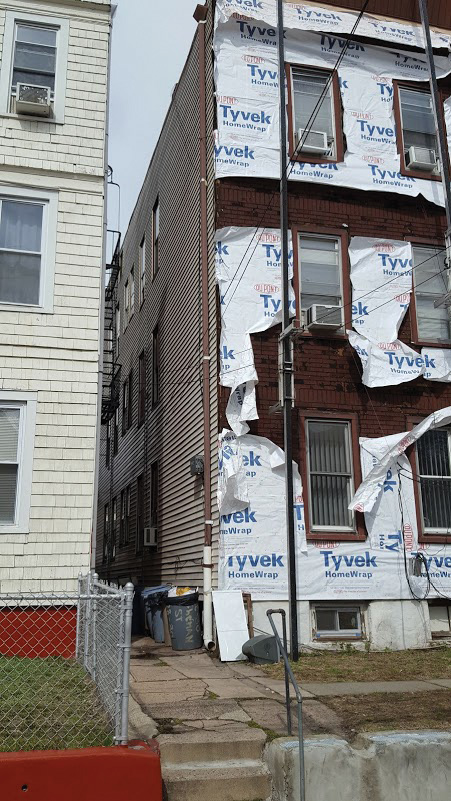
Apparatus Placement
Observe the apparatus placement in the photo/video. Does this coincide with your local standard operating procedures? Is there enough room to move additional apparatus in or out? Can the ladder truck get into position, and is it positioned so that the ladder can be used to its maximum potential? Look up and down for any overhead obstructions (e.g., wires and trees) that may prohibit using the aerial ladder and cause you to rely on ground ladders. Power lines can create an electric fence for upper floors of a building (photo 4). A wise truck officer once told me, “You can always stretch more hose, but you can never stretch a ladder” (photo 5).
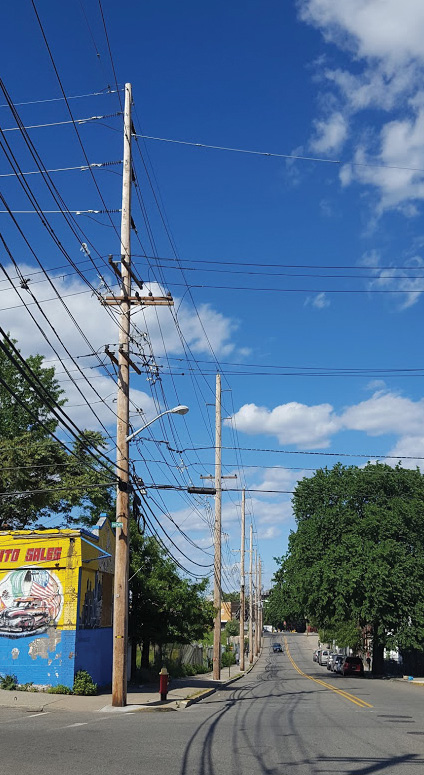

Also, make sure you look down. Parking the apparatus on or over manhole covers or street grates can bring a variety of issues. For truck companies, placing an outrigger on a manhole cover could be catastrophic during aerial operations. Manholes have been known to explode with extreme force during electrical vault fires.
Where is the first-due engine? Is it past the fire building, before it, or directly in front of it? What are the concerns of the engine as seen in the photo/video? What size hoseline should be deployed? Why? Where should the first line be placed? These questions will encourage a discussion that will vary according to the personal experiences of members.
Don’t forget about the ambulance, the medic unit, and the rapid intervention crew (RIC) apparatus. Where should they be staged? Remember, if you’re driving the ambulance, don’t get blocked in; make sure you can leave the scene quickly with a critical patient!
Smoke Condition
Regarding smoke, there are several items to consider: Where is it coming from? What is the volume? What is the velocity or how quickly is it issuing? What is its thickness or density and its color? I learned to look for all of these things in Chief Dave Dodson’s presentation, “The Art of Reading Smoke.” Volume, velocity, density, and color are essential factors crew members must consider in reading smoke. Each factor may give the crew a clue as to the fire’s location. The color may indicate what’s burning and how. Black smoke may mean that a few things are burning. The location and the smoke odor assist in determining what is on fire. Black smoke from a chimney may indicate a furnace malfunction, whereas black smoke coming from a window of an apartment or a room may indicate a contents fire. Brown smoke coming from a wood-frame building or one of ordinary construction may indicate that the structural wood is burning, which would lead you to believe that this is more than just a contents fire.
Fire Extension
Where is the fire visible in the structure? How much fire is present? The amount of fire will usually dictate the type of attack you should use. Also, in what type of structure is the fire? Knowing what the fire will do in each type of structure directly affects firefighter safety. For example, consider a basement fire in a balloon-frame building. Where would you expect fire to travel first? Most times, it will run up to the attic because of the open stud channels running from the basement directly to the attic without any fire stops.
Rapid fire extension is another safety concern for interior crews. This extension can cut crews off from their primary means of egress as well as overpower the hose streams of the suppression team. Something is not right if the fire increases in intensity when suppression teams are flowing water on it.
Ventilation
What type of ventilation would be most effective, and where should it be performed? The ventilation type and location depend on the fire’s location as well as the overall operation to be performed. The different ventilation types are vertical, horizontal, forced, and hydraulic. Each has a specific purpose and should be used at a specific time. Above all, before performing any ventilation, make sure all crews on scene have been advised that it will occur. Coordinated vertical ventilation improves interior conditions (photo 6).
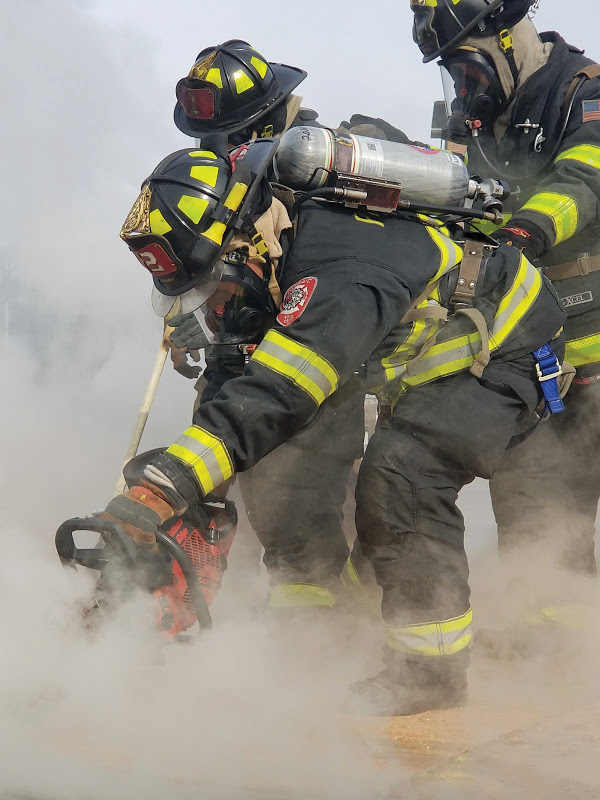
Initiate vertical ventilation when the fire involves any or all of the following: the structure’s top floor, attic space, cockloft, or truss space. Perform this ventilation in coordination with the suppression and search teams. Vertical ventilation helps to improve visibility and removes most of the superheated gases and smoke that have banked down inside the structure. Vertically ventilating a truss roof is very dangerous; cut the vent hole only from the safety of an aerial device.
Perform horizontal ventilation on any fire below the top floor of the structure. Opening/venting windows and doors on the fire floor opposite the fire and suppression team will greatly improve conditions for those operating inside the structure. Again, coordinate horizontal ventilation with the suppression and search teams.
Using positive-pressure ventilation to assist with fire suppression is a tactic that must be drilled on often if you use it in your department. Knock down the fire and overhaul to ensure that all hidden fire has been located and properly extinguished. This tactic works well in structures without open void spaces.
Hydraulic ventilation works well when removing steam, heat, and smoke once the fire has been knocked down in the fire compartment. Use the window that was vented as the suppression of that room began. If the window was not vented, break out the window and begin hydraulic ventilation. Make sure you know where you are spraying that fog stream. Outside team members can be injured by the steam and falling glass.
RIC
Where should the RIC be located in the photo/video? Is just one RIC appropriate for this incident? Where would additional RICs be placed? What safety functions can the RIC perform while standing fast?
The RIC members have an essential function on the fireground before they are put into action to remove a member in distress. They may be able to ladder the building or remove security bars and gates from windows and doors. The RIC should constantly perform safety surveys of the structure looking for egress and entry points as well as fire and smoke progression.
What special tools may be needed for this type of structure or occupancy type? Are there large open floor areas? Is there the potential for a suspended ceiling collapse? Where has the fire spread, and where are our members operating? These are just a few questions that should be going through the heads of the RIC.
Scene Safety
At any incident scene, there is the potential for a number of accidents to occur. All members must be aware of several areas around the incident scene. Some of them include power and utility line connect points to the structure; parapets; and obstacles that may be around the structure that could cause slips, trips, or falls.
Weather can be another factor that can lead to safety concerns on the fireground. In areas that are subject to freezing temperatures, firefighters wage a constant battle against ice, snow, and cold. Ice and snow can wreak havoc on a fire scene. The members operating outside will need rehab to warm up physically and to keep themselves mentally focused on the dangerous tasks they perform.
Rain and wind can also cause scene safety concerns by blowing rain and debris into members operating at incidents and apparatus en route. High winds may break power lines, resulting in their lying across roads, yards, and fences. Treat any down wires as if they are energized until the proper utility authorities confirm that they are deenergized.
Heat and humidity are also hazards. As we work to extinguish the fire, our bodies generate heat internally as well as absorb the heat from the fire. This internal heat can cause physiological problems such as strokes and heart attacks. We need to pay special attention to rehabbing ourselves before getting back into the battle. Drinking cool water before and during our shift and staying out of the sun to cool down are excellent ways to combat the effects of dehydration, heat, and humidity.
Vehicular traffic is a serious hazard when members are operating on the street or highway. We must always be situationally aware of our position and the moving traffic. The driving public has a tendency to look at all the flashing lights and not pay attention to where they are driving. The intoxicated or under-the-influence driver pays no attention to anything and can crash into apparatus or members. Too many fire service members have been needlessly injured and killed by vehicles. When operating on a roadway, protect your members by using the apparatus to block off the area in which they are operating. Wearing the American National Standards Institute-approved Class 2 or 3 reflective vests while operating on roadway incidents will make members stand out. And, always look both ways before stepping out into an area where traffic may be moving (photo 7).
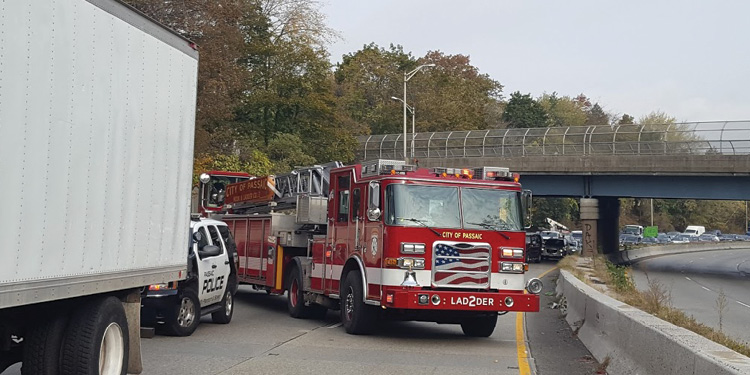
This type of drill serves several purposes. First, it is not boring and allows the members to get involved directly and share their ideas and knowledge. Senior and junior members sharing their knowledge of the various ways to work through an incident demonstrate their ability to think “outside the box” and come up with solutions for issues that may occur at a future incident. It also helps to sharpen the crew members’ skills by discussing these topics. This drill can also serve to preplan similar structures you have in your response area. These discussions lead to learning about strategies and tactics while focusing on important safety aspects of the incident, which will most certainly improve your department. Companies that drill often and retain the knowledge from the drill work smarter and safer at the incidents to which they respond.
John Hayowyk Jr. is a 25-year veteran of the fire service and a captain with the Passaic (NJ) Fire Department. He leads the training division of the Roxbury Township (NJ) Volunteer Fire Department. He is a NJ state-certified instructor, an emergency medical technician, and a fire official.
RELATED
INSTRUCTOR SWAPPING: SHARING KNOWLEDGE AT NO COST
PREPLANNING FOR APARTMENT COMPLEX RESPONSE
The Rocking Chair Firefighter, the Tough Guy, and Green Ears: Blending the Generations

